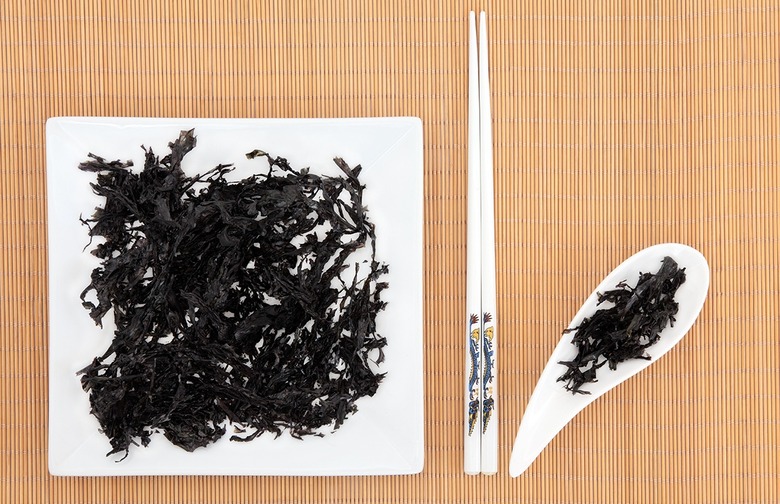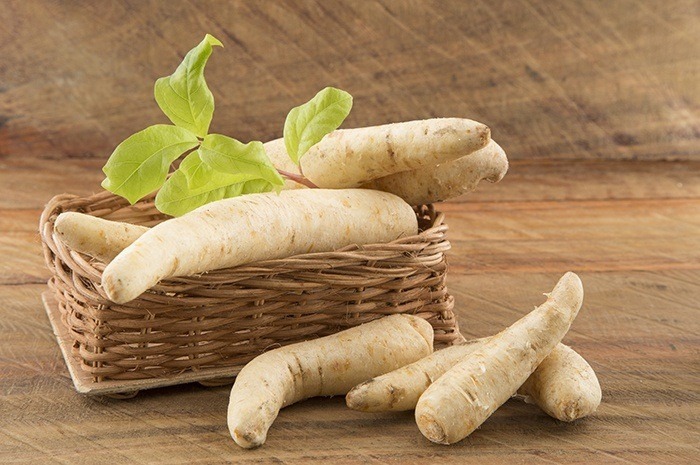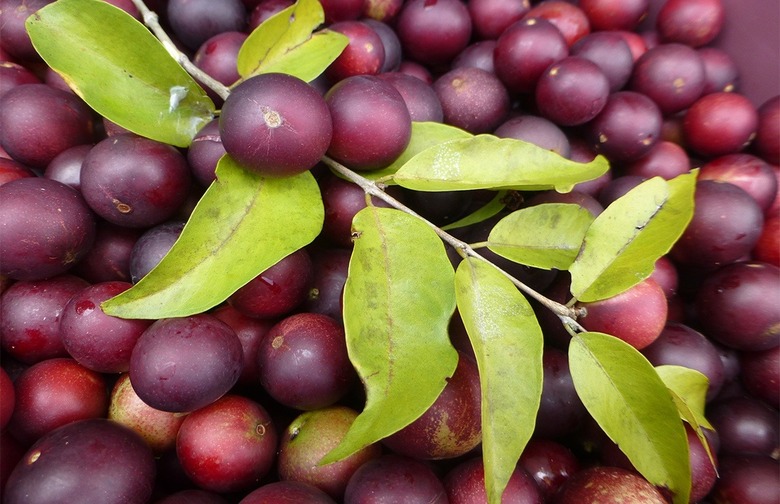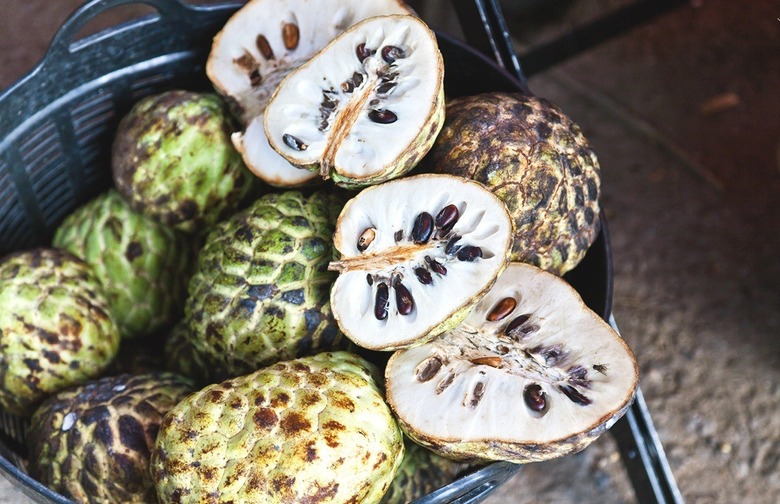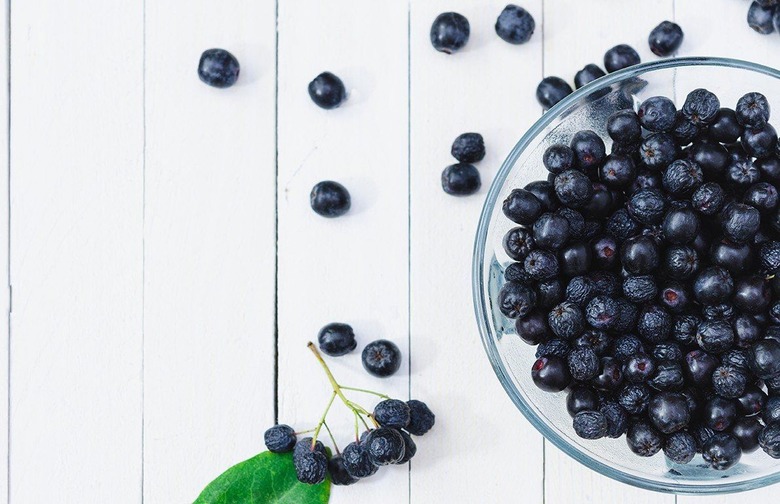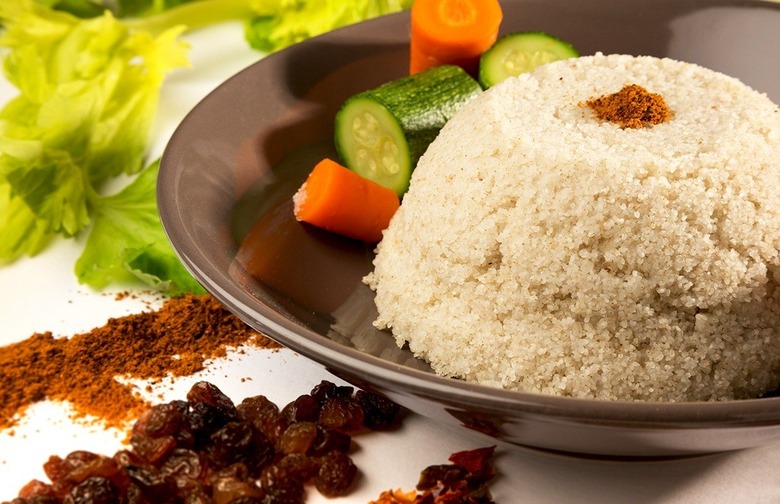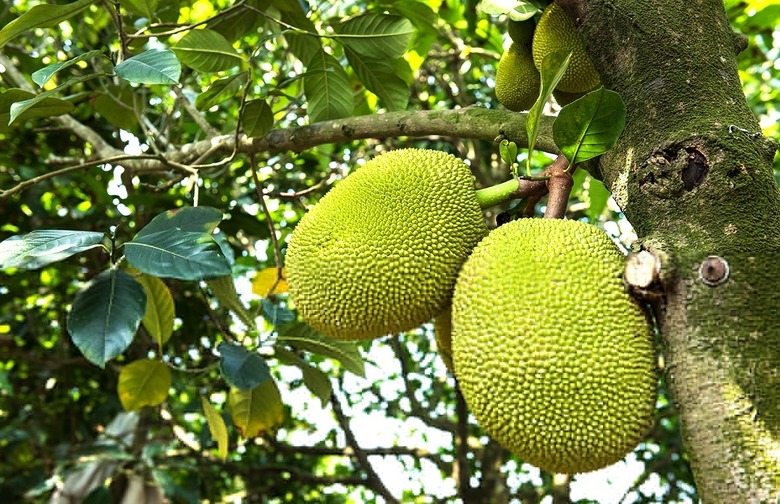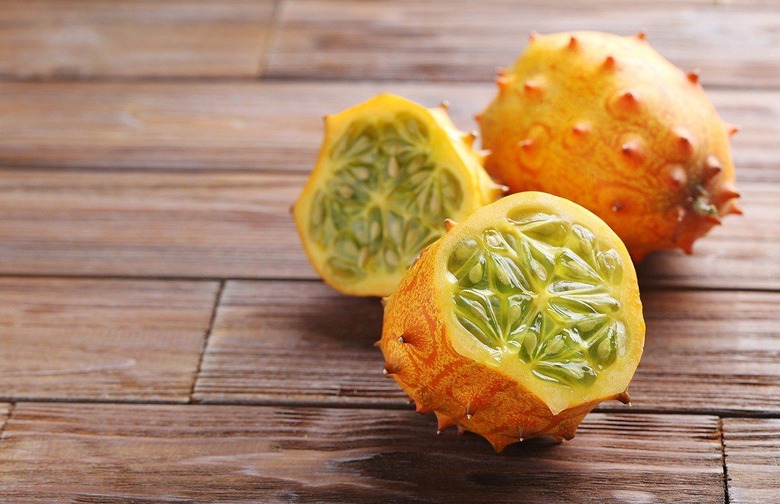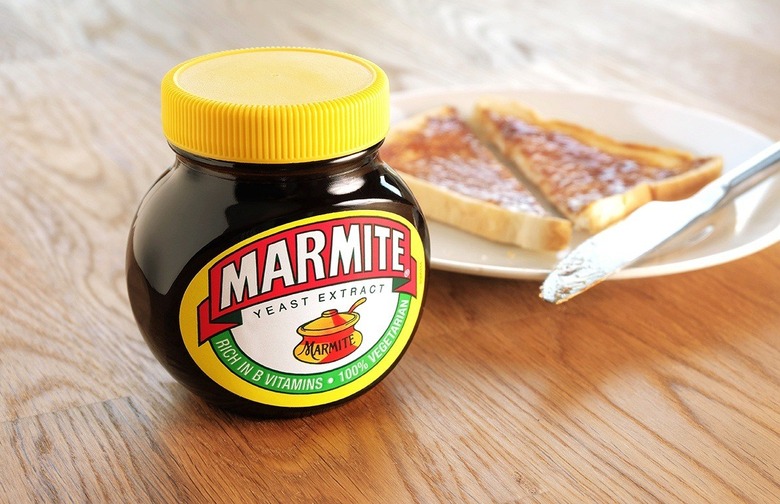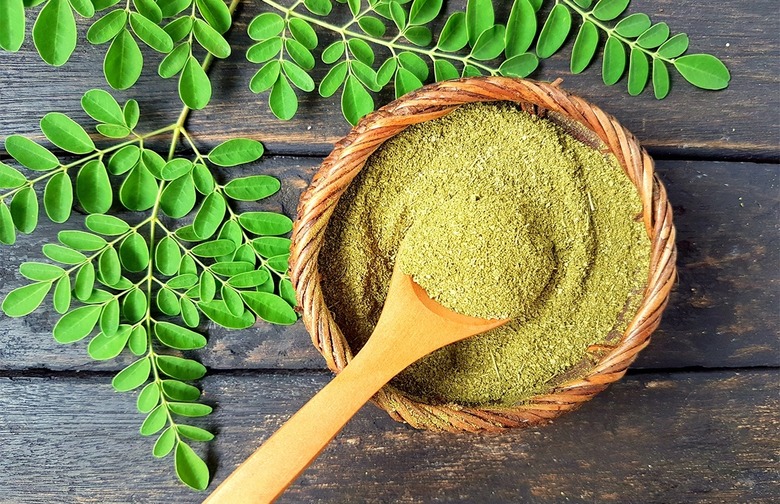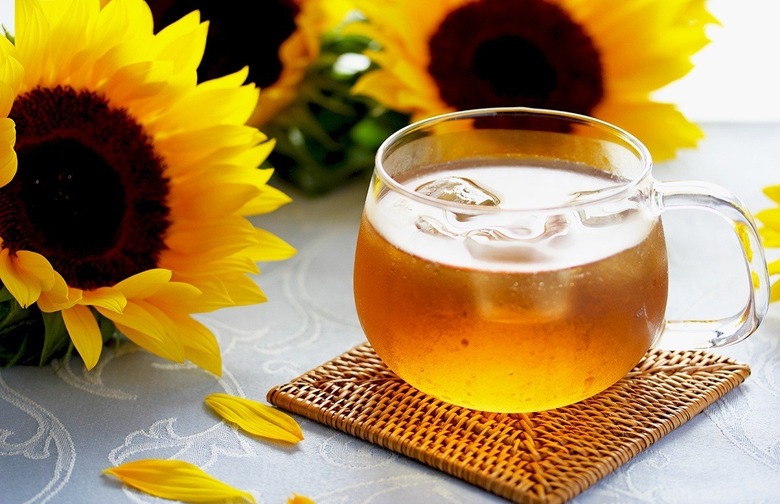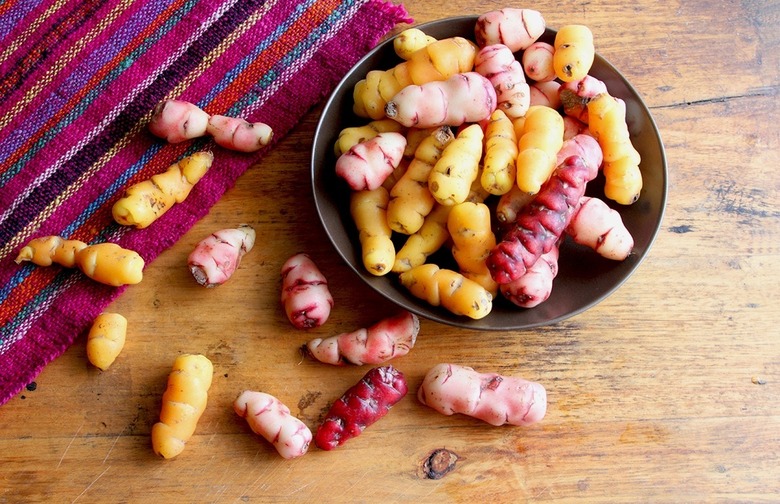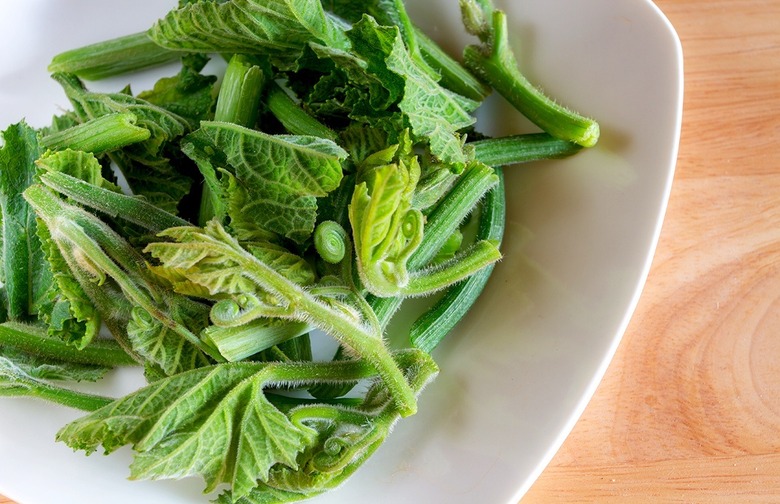The 13 Healthiest Foods You've Never Heard Of Slideshow
Also known as sea oak, arame is a type of kelp that is popular in Japanese cuisine. Arame is traditionally purchased dried and reconstituted in liquid, and the dark brown strands add a firm texture and mild sweetness to anything from soups and casseroles to muffins. Like other species of seaweed, arame is nutrient-dense, containing high amounts of calcium, iodine, iron, magnesium, vitamin A, and lignans — phytonutrients that can act as immune system-supporting antioxidants.
Arracacha
Arracacha is not the prettiest vegetable (it looks like a grotesquely misshapen potato), but this starchy root is an important component of many South American cuisines. Arracacha's flavor is described as a cross between celery and carrot, but unlike these root vegetables, Arracacha can't be consumed raw. When boiled, it can be transformed into purées, dumplings, mashes, or creamy soups. Arracacha is relatively low in calories but incredibly rich in calcium, containing four times as much as potatoes. It's also a source of carotenoid pigment, which the body needs to produce vitamin A.
Camu Camu
Camu camu is the fruit of a strange Amazonian shrub. By weight it contains 30 to 50 times more vitamin C than an orange and is helpful in combating viral infections such as herpes, cold sores, and shingles. Although the research is still inconclusive, camu camu may also function as a natural antidepressant. It's sold in the United States in the form of a powder, making it easy to add to shakes and smoothies.
Cherimoya
This fruit might be unknown to the temperate climate of North America, but in Peru, Ecuador, and Colombia it is a common delicacy; author Mark Twain even called it "the most delicious fruit known to men." Different varieties of cherimoyas offer a range of tasting notes, but they are often categorized as having a pineapple/banana/pear flavor. A 3.5-ounce serving of raw cherimoya contains only 75 calories and is a good source of vitamin B6, vitamin C, and dietary fiber. There's also been discussion about the fruit's gamma-aminobutyric acid content, which is said to ease the pain of headaches.
Chokeberries
Don't be deterred by their name, the chokeberry is completely harmless. When eaten off the tree, the tart chokeberry may cause your face to pucker, and for that reason it is more commonly used in jams, syrups, salsas, and preserves — in Lithuania they are even made into wines. Chokeberries have an incredibly dense concentration of polyphenols, especially proanthocyanidin, which research has linked to a reduction in bacterial infections.
Fonio
Fonio is a rugged grain that is popular in the arid climate of West Africa. The seed crop, which resembles millet, is incredibly important to food security in rural areas because of its short maturation time of around eight weeks (in comparison, spring wheat takes four months). The grain is made into porridges and bread, or used to brew beer. Nutritionally, fonio is similar to sorghum and offers a spectrum of amino acids. It is low on the glycemic index (making it good for diabetics) and is also gluten-free. Modern dehusking technology has enabled increased production and availability of fonio, so the grain might be appearing soon in a Whole Foods near you.
Jackfruit
Jackfruits are a jarring sight. This bulbous fruit looks like an enormous pear with a rough, textured skin. These fruits are popular in Southeast Asia, flourishing in the tropical climate. Jack fruit is almost 75 percent water, but it is a plentiful source of vitamin B6, vitamin C, and potassium. Unripe or "young" jackfruit has a meat-like texture, and as a result, is used as the foundation of curries in predominantly vegetarian culinary cultures.
Kiwano
When sliced open, this fruit looks like it came right off the set of the movie Alien. Kiwano, also known as horned melon, is pretty intimidating, with a spiky exterior and an inside that looks like fluorescent green slime, but its enjoyable flavor is somewhere between banana and passionfruit. Kiwano contains all sorts of minerals, including zinc, calcium, and magnesium, and its high water content makes it an ideal candidate for weight loss regimens.
Marmite
"Yeast extract" doesn't sound appealing, and many would argue that Marmite's taste warrants this perception. The condiment, which is popular in the United Kingdom and New Zealand, is traditionally spread over toast or paired with cheeses, but it has a wide range of uses. The U.K. version of Marmite is rich in protein and B vitamins like thiamin, riboflavin, niacin, and folic acid.
Moringa
While it's also known as the horseradish tree, Moringa oleifera's leaves won't clear out your sinuses. The leaves of this Southeast Asian tree are ground to make a vibrant green powder. Moringa is full of vitamins A, C and E, calcium, and potassium, and has also been found to reduce plaque build-up in the arteries, subdue inflammation, and support brain health.
Mugicha
This roasted barley tea hasn't hit the chic coffee house scene quite yet, but be on the lookout for mugicha. Roasted barley teas are a signature beverage in Japan, China, and Korea, and are served either hot or chilled. The tea has antibacterial properties, contains antioxidants that neutralize the inflammatory free radicals, improves blood circulation, and even works as a digestive.
Oca
It might look like a little wrinkled potato, but this petite tuber is teeming with minerals like iron and phosphorus and is also an excellent source of amino acids. Oca is originally a South American perennial plant, but it's now grown around Western Europe and New Zealand. There are more than a thousand varieties of oca; some taste like a traditional white potato, while others have a sweeter apple-celery flavor.
Pumpkin Leaves
During the fall season pumpkins are displayed prominently on porches and windowsills, but the often overlooked pumpkin leaf is the real treasure of the pumpkin patch. Before they're consumed, the fibrous stems need to be split and de-stringed, but after that you'll be left with a tasty pile of greens that are surprisingly sweet, with a taste somewhere between green beans, broccoli, and spinach. Pumpkin leaves contain almost a full day's worth of vitamin K, while also containing a substantial amount of vitamin A.
